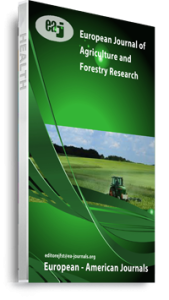Soya-bean cultivars grown in Lesotho have not been characterized morphologically to distinguish them. A study was conducted in Lesotho, with objectives of (i)distinguishing the cultivars of soya-beans, (ii) estimating genetic distances among cultivars, (iii) determining the morphological markers with high discriminatory power and (iv) estimating genetic and phenotypic variance among cultivars. Experiment was laid-out using randomized completely block design with 28 treatments and three replications. Data collected using IPGRU descriptor were stem determination, pubescence presence, pubescence density, pubescence colour, pubescence type, leaflets size and leaflet shape. Data were subjected to analysis of variance, cluster analysis and principal component analysis. Analysis of variance revealed a highly significant difference among soya-bean cultivars for pubescent type and pubescent density, and only significant for leaf size and leaf colour. No significant difference was obtained for leaf shape and stem determination. Cluster analysis was able to group cultivars into two groups which further divided into sub-groups. Sub-groups again were divided into smaller groups. Outlier was also obtained. Highest genotypic variance was obtained in pubescence density and pubescence type, while lowest genotypic variance was observed in leaflets shape, leaf size and pubescence colour. Pubescence density and stem determination revealed high phenotypic variance. Leaf size and pubescence colour expressed lowest phenotypic variances. High heritability was expressed in pubescence type and pubescence density. Low heritability was experienced in leaflets shape and stem determination. Highest genetic advance was shown by leaf size, pubescence type, leaflets shape and pubescence density. The lowest genetic advance was experienced with pubescence colour.
Keywords: Cluster analysis, Glycine max, Principal Component Analysis, genotypic variance, morphological markers, phenotypic variance

